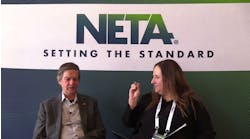If you’re not pitching your electrical services to your existing customer base, you’re giving up sales that probably could be yours. If you’re not pitching the solutions those customers actually need, you certainly are giving up sales that would be yours.
Yet, do you really understand what your customers need? How are you supposed to know? Does your customer even know what your customer needs? Probably not.
Let’s take some lessons from an audio products distributor that sells to a particular small retailer. We’ll just call them Distributor A and call their customer Popular Products, LLC.
The retailer has accounts with half a dozen distributors in the same basic product space. But it spends more with Distributor A than with all the other five combined. In fact, it spends about eight times as much with them as with all the other five combined.
The other five distributors follow the same formula. They give the same standard pitch to everyone. Usually, their pitches are based on excess inventory they want to get rid of rather than on products that will work especially well for a given customer.
There’s lesson number one. Don’t just pitch to your customer the work you want to do. They really don’t care what work you want to do. They care about what work they believe they need done.
Distributor A has a young, hungry account manager (one of several on staff). Let’s call her Ashley. She reached Popular Products, LLC on a cold call. But she had already done her research to see exactly what Popular Products, LLC was selling. So she aimed her pitch toward expanding on the existing needs of her customer. She offered similar products that might do better.
There’s lesson number two. Begin with your customer’s existing needs. For example, you learn from your local equipment rep (whom you take to lunch periodically) that they just leased generators and temporary lighting for a three-day shutdown at XYZ company. “Yeah, they’ve got a firm coming in there to do some cable testing for a couple of days.” Great! Now you know that company does cable testing. You have the basis for an introductory phone call.
But you don’t call and pitch your cable testing services. You call and talk to the plant engineer about meeting to discuss what their needs are for ensuring the reliability of their electrical infrastructure. “I’m hoping we can help you out there. We’ve got a good track record. Every facility is different, and I’d like to see what your needs are and what we may be able to do for you.”
Once you have the opportunity to discuss, in person, what they are doing now, then you can offer to do it in some way that adds more value. Don’t come in offering to beat the competitor’s price; that is usually a recipe for failure. In this example, you could offer to handle all of the temporary power and lighting needs so the plant engineer doesn’t have to contend with that task.
So you’re still not pitching anything that expands on what they are doing. Let’s see what Ashley’s move was after she got orders flowing with Popular Products, LLC.
She began talking up related product lines, but was careful to recommend specific products with a known history of doing well. The customers of Popular Products, LLC were buying audio speakers from Popular Products, LLC. But Popular Products, LLC was not selling amplifiers to go with them.
Popular Products, LLC made a few test purchases of specific amplifier models, saw great success, and then starting placing big orders back to back for amplifiers. They went from zero amplifiers to more than 30 different models in a couple of months. That’s business that did not exist for anybody with Popular Products, LLC. Ashley created that business, and her company got all of it.
So what’s your next move with your customer who has the cable testing program? Offer related services. “So you conduct insulation resistance testing on your feeder cables. What about infrared inspections of your busways? Those can fail, too.”
Despite the earlier successes, not all was roses in Ashley’s situation. Some of Ashley’s specific recommendations just did not perform well where Popular Products, LLC was selling. Ashley’s company had a punitive return policy, but each of the other five distributors made it easy to return poorly moving inventory.
Should Distributor A stick to its return policy to avoid the pain and cost of returns? Well, doing so would cause Popular Products, LLC to greatly curtail future business with them in favor of the competition. So they modified their policy for all customers with returns below a certain percentage of sales.
That also provides a lesson for electrical service firms. Adapt to the realities of your marketplace and the needs of your best customers. This doesn’t mean to operate without structure, but to modify that structure (when warranted) for the customers who matter the most.
For example, your firm bids on projects and then controls them from beginning to end. If a customer wants power distribution installed in a new structure, your crew comes in and does that.
You have a major customer that’s had some personnel issues. One electrician retired recently, another one left for a different job, and replacements have yet to be hired. Now they’ve been given a mandate from the corporate office to do some big electrical project. They ask if they can “borrow” four of your people. Those people would work at the direction of the in-house staff, essentially as temporary hires still on your payroll.
In addition to gaining revenue, you’re helping out a big customer if you meet this need. You could say “Sorry, we don’t do that” and force them to contact a competitor who will. But would that approach enhance your relationship with them? Or would adapting your structure be the wiser choice?





